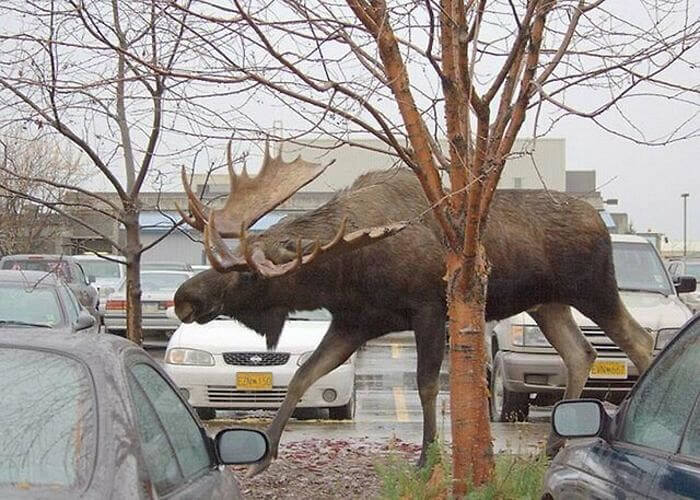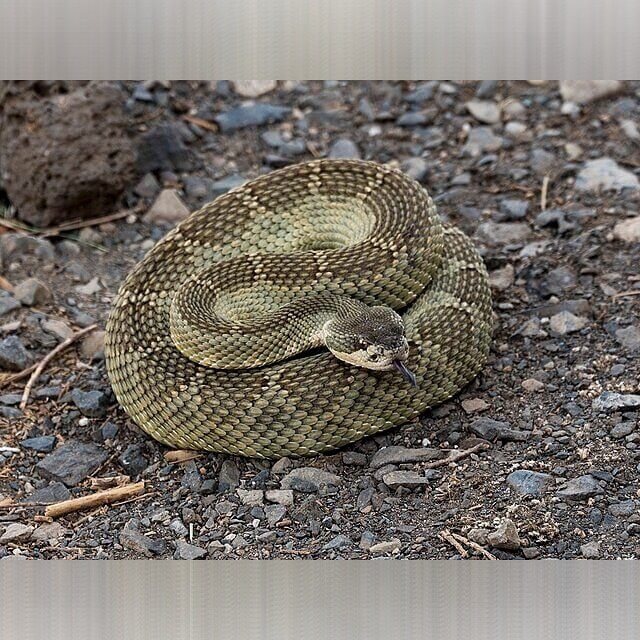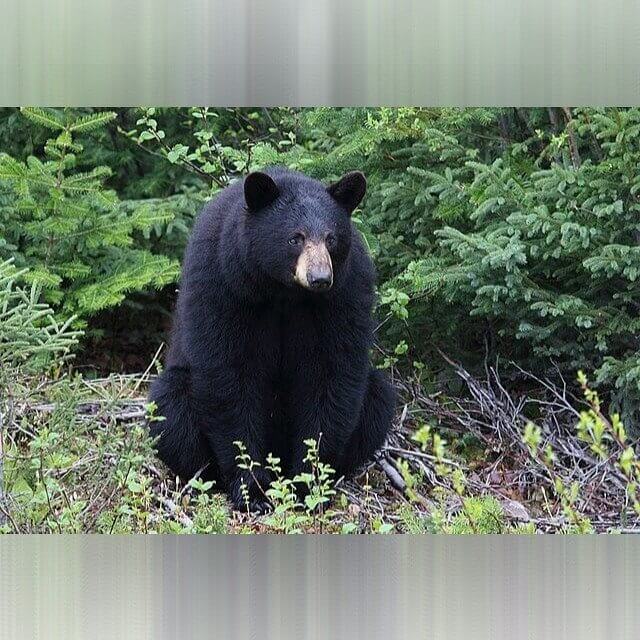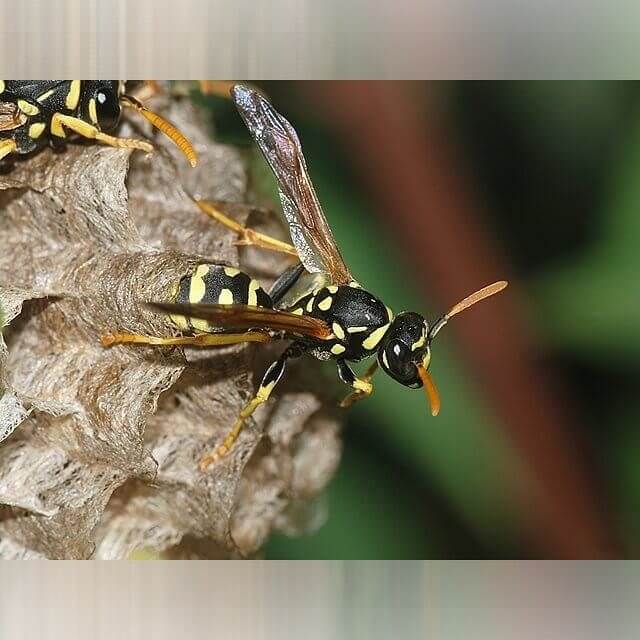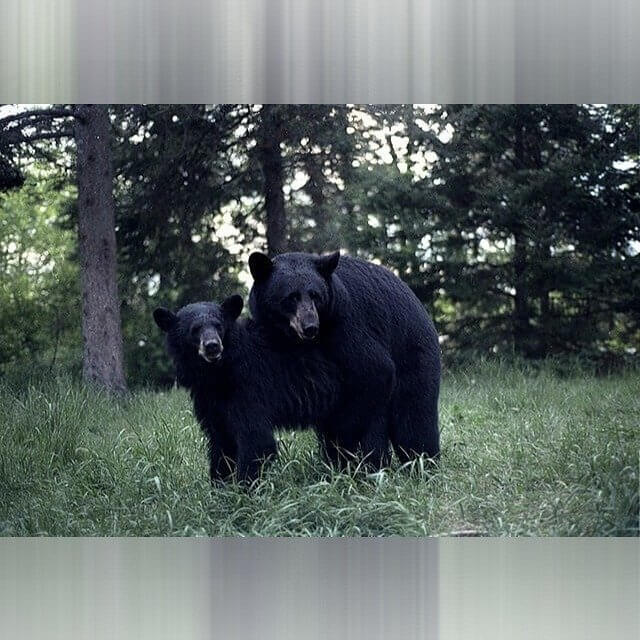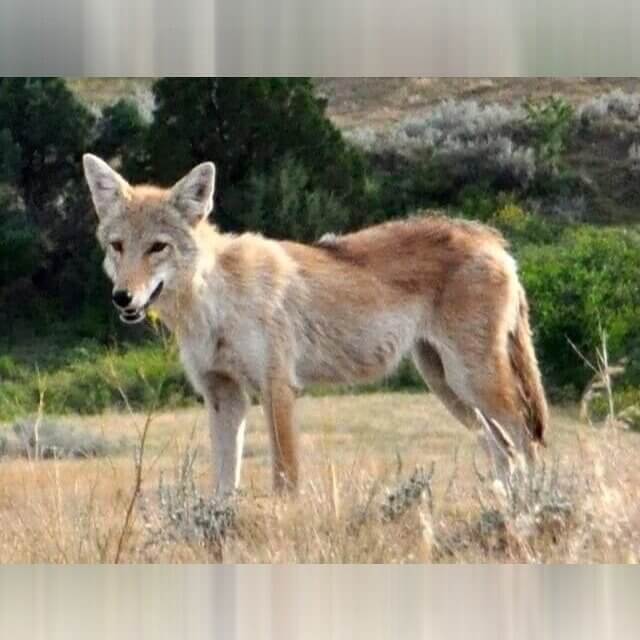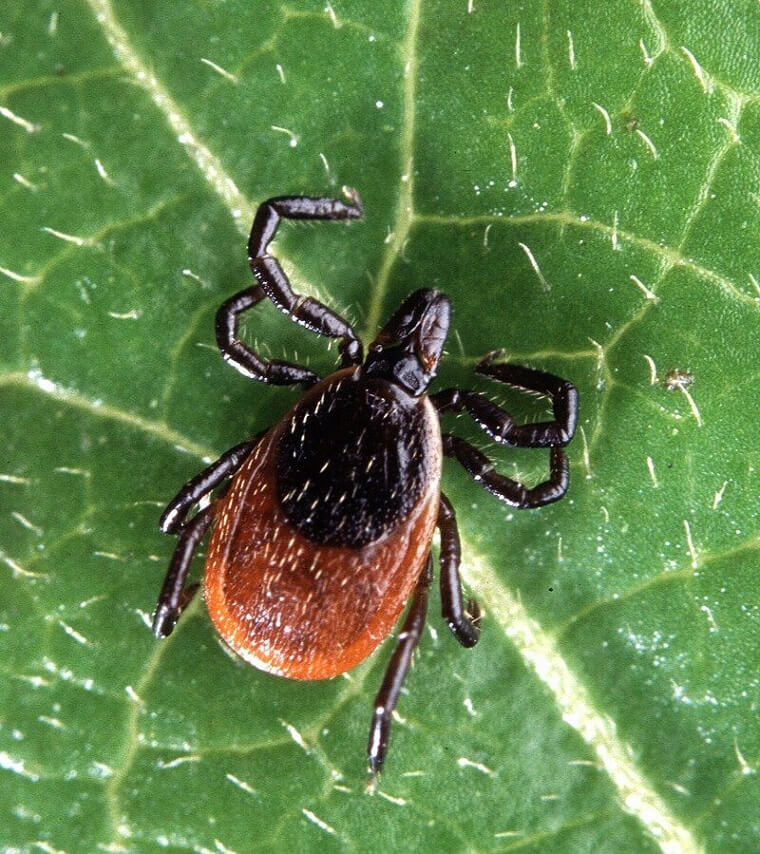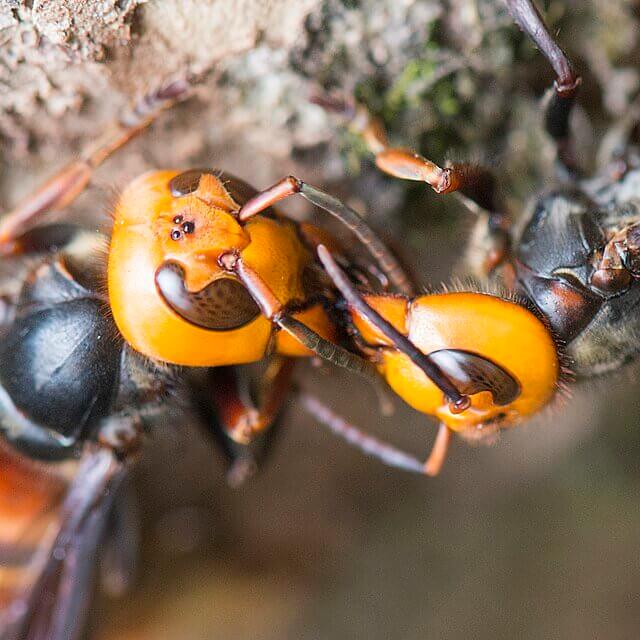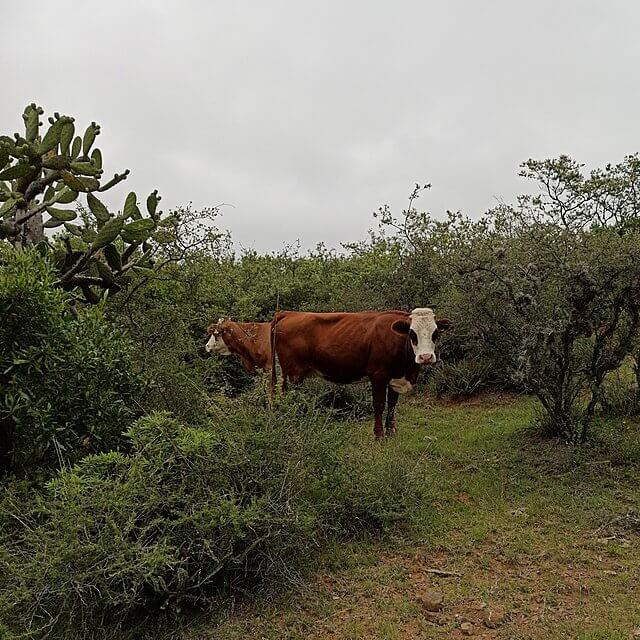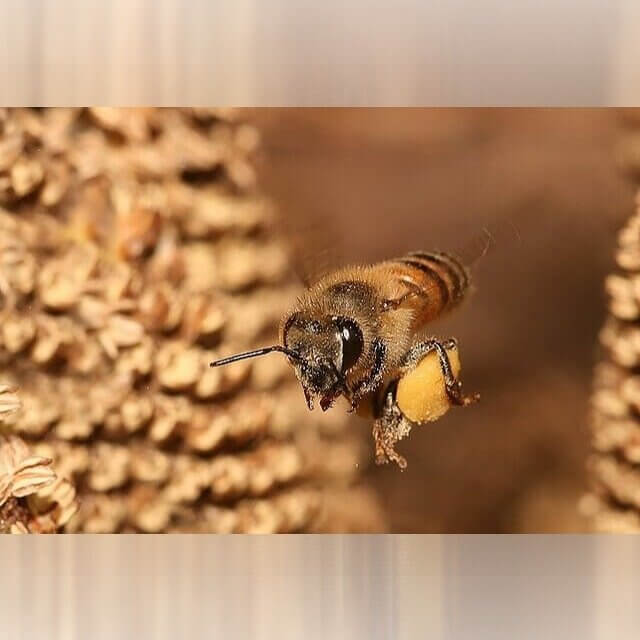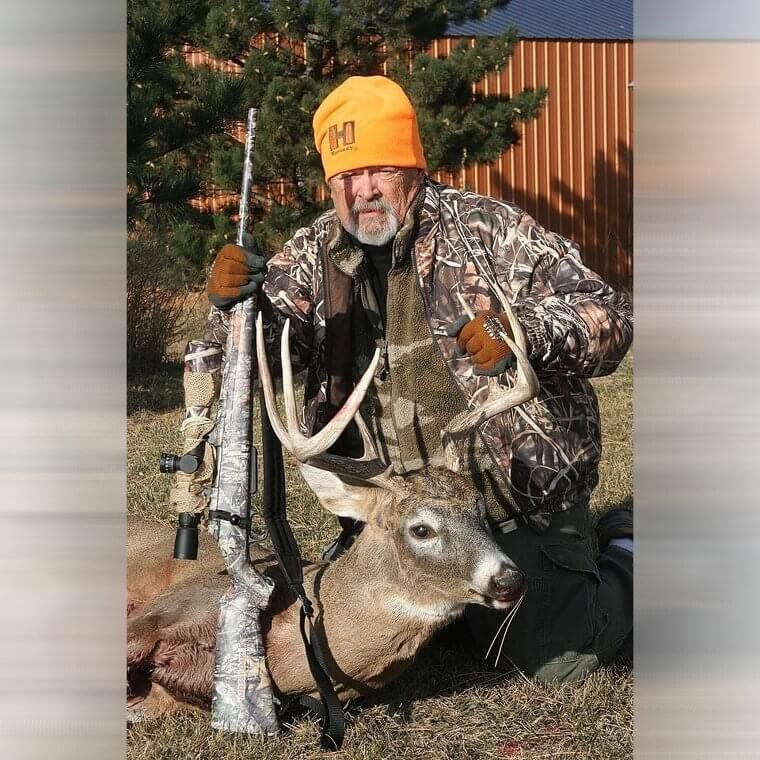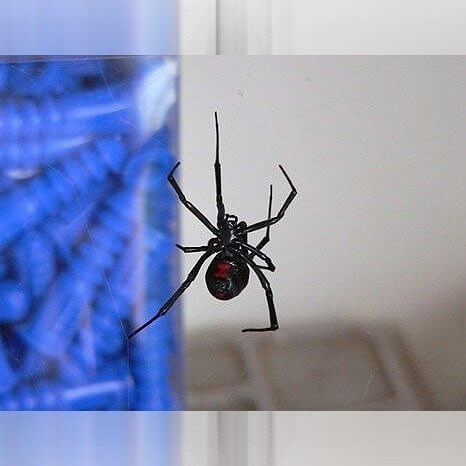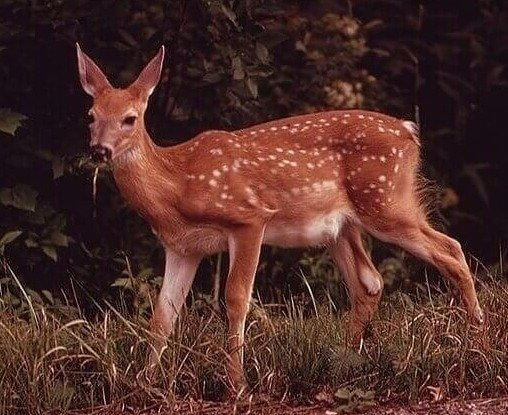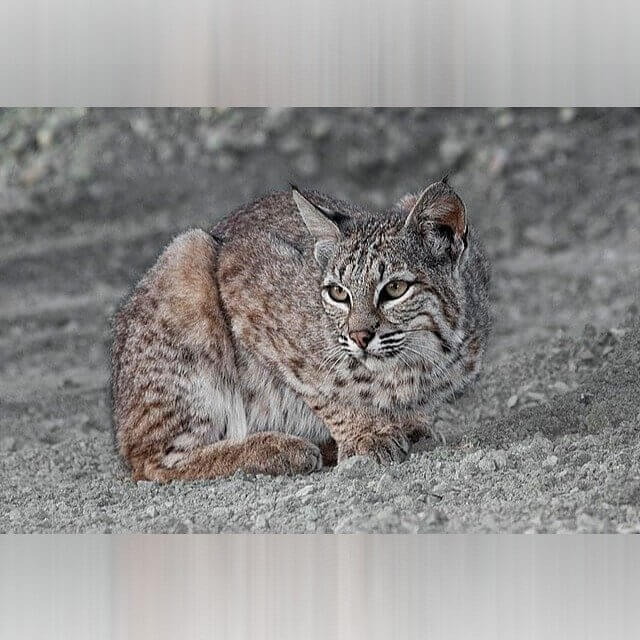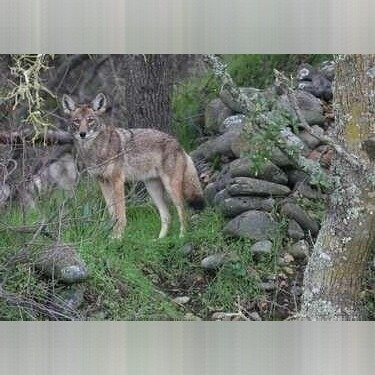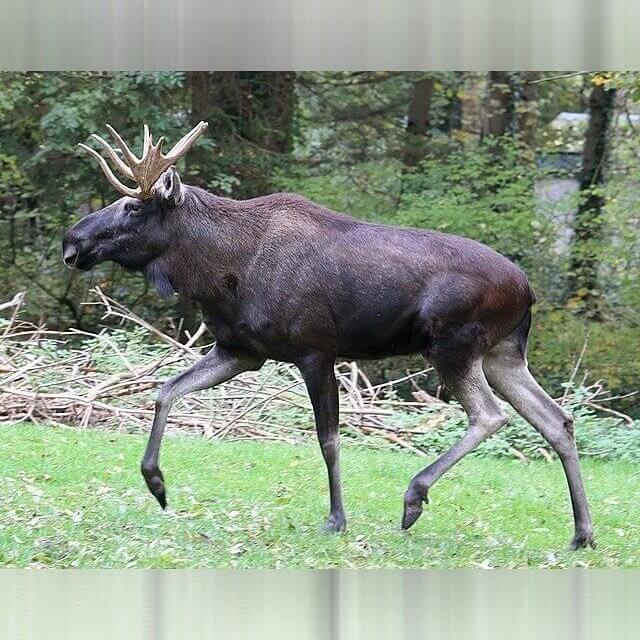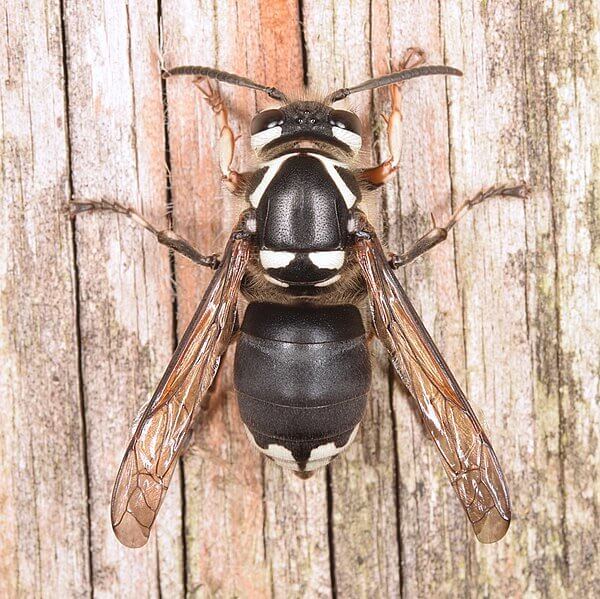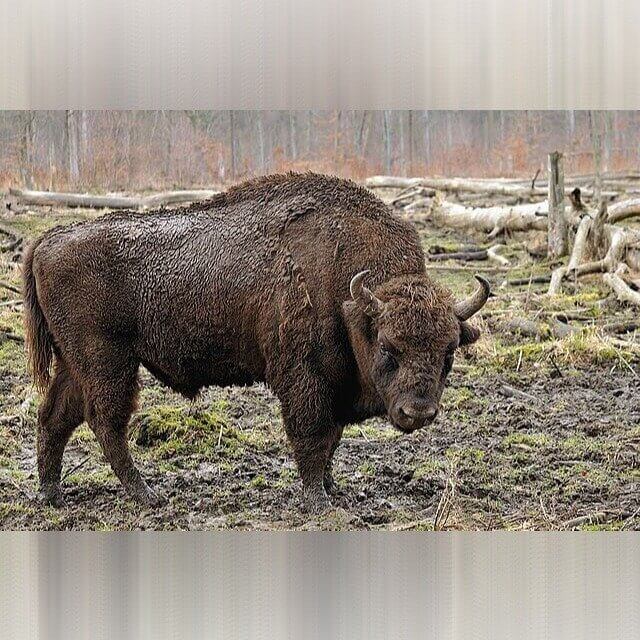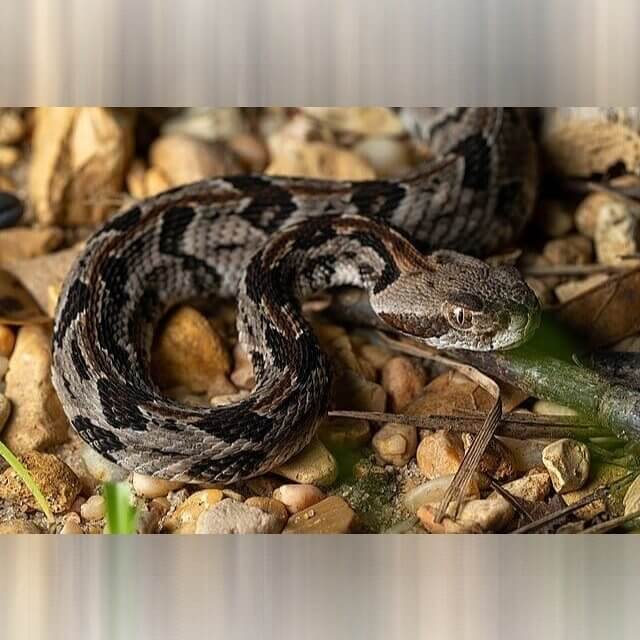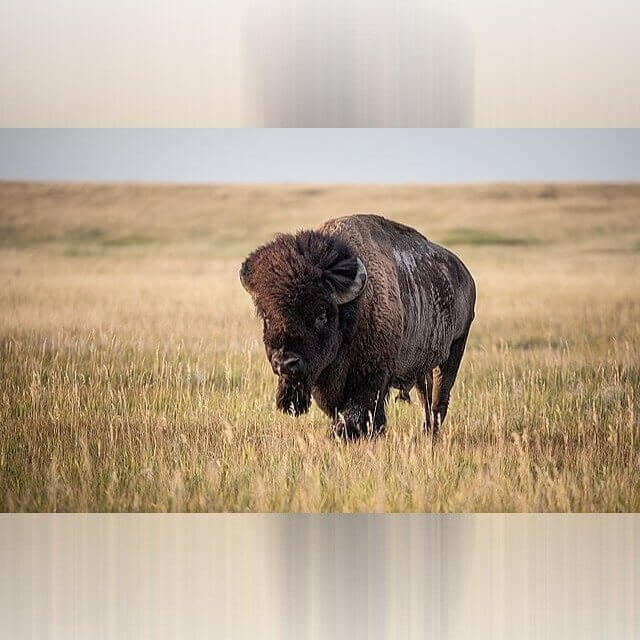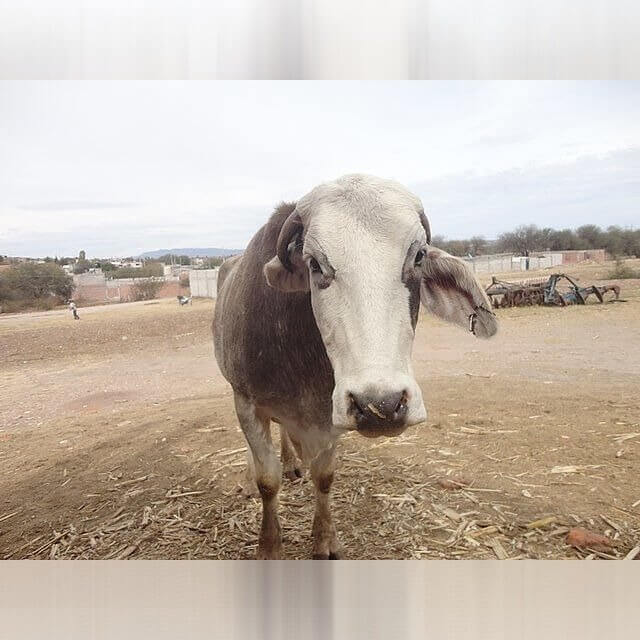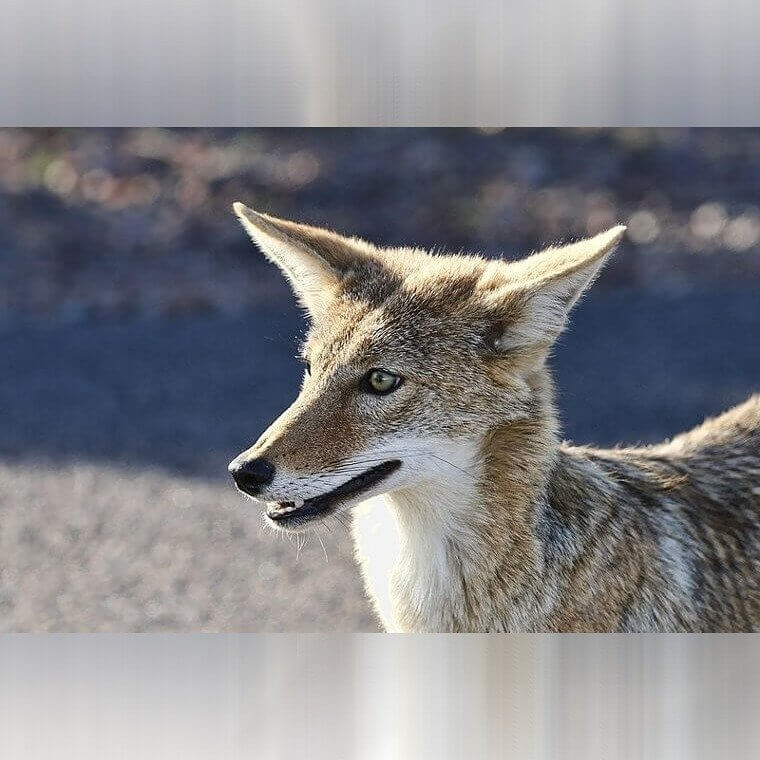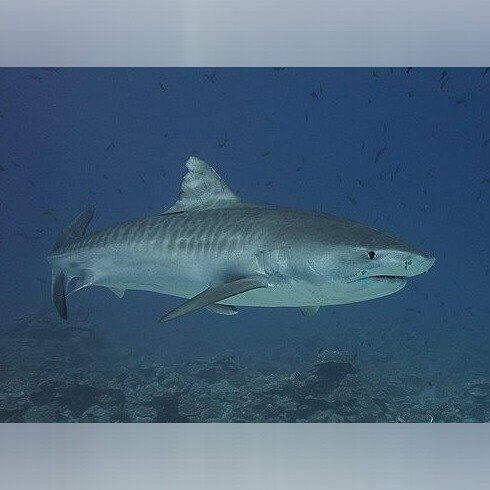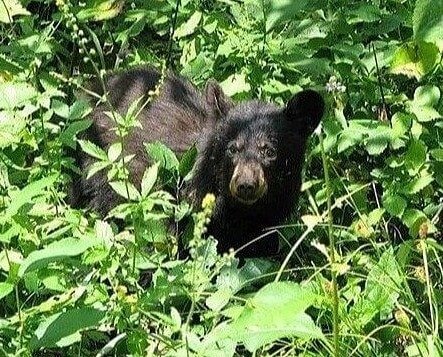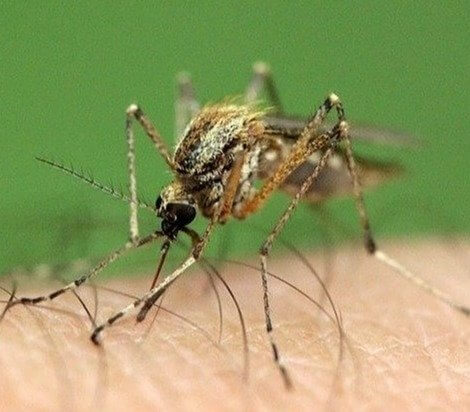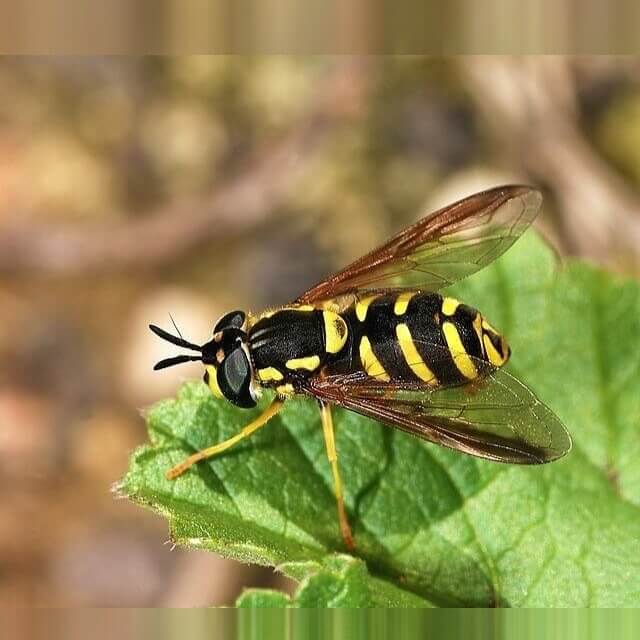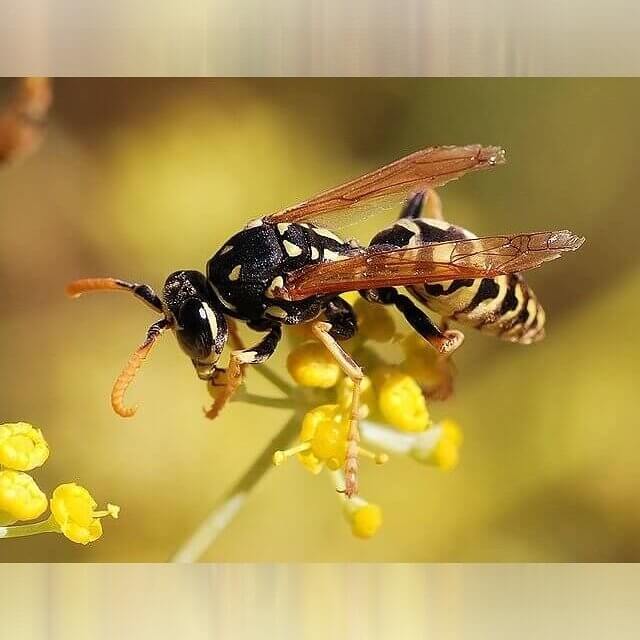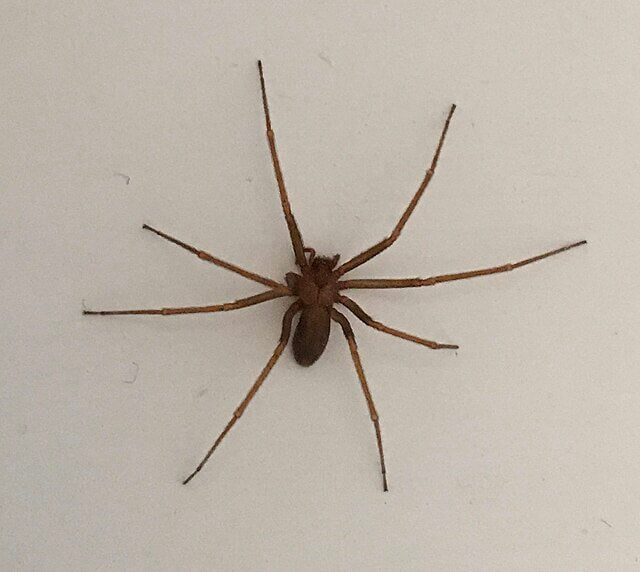Alaska - Moose
Alaska, maybe more than any other state, is known for its wildlife and nature. The state still has very large populations of grizzly bears, wolves, and moose. However, it's the moose that you need to worry about since they account for more fatalities than their predator counterparts. Like deer, car accidents account for most human deaths when it comes to moose. But it's worth noting that they can be extremely aggressive.
They're also huge. If you've never seen a moose in person, then a photo really doesn't do it justice. These animals usually tower over cars and can weigh as much as 1,300 pounds.
California - Rattlesnakes
California is a huge state that takes up nearly the entire West Coast of the U.S. It's also very crowded in some places, which means humans and wildlife are always coming in contact with one another. According to the CDC, most of the fatalities from wildlife are due to rattlesnakes, which isn't too surprising considering how well the snakes blend in with their surroundings. Still, it's pretty rare to be killed by a rattlesnake.
According to the CDC, around 1 in 221 people bitten by rattlesnakes in California end up dying because of the bite. That usually comes out to around 6 to 8 people a year.
Idaho - Bears
Officially, the CDC lists "large mammals" as the number one threat to humans in Idaho. They may be grouping a couple of different species together here, but considering that bison are still pretty rare in Idaho, we have to make the assumption that they are grouping together multiple species of bears. Idaho is home to both black bears and grizzles, which can be quite aggressive towards humans, especially if they have a litter of cubs.
There are many stories of hikers in Idaho having dangerous run-ins with black bears and grizzlies while out in the wilderness. Unfortunately, not all of these stories have happy endings.
Oregon - Bees, Wasps, and Yellow Jackets
When most people think of Oregon, they usually think of vast temperate forests. The state still has populations of bears and mountain lions. However, neither of those two is the number one killer in Oregon. That distinction goes to bees, wasps, and yellow jackets. In total, there are more than 500 species of these guys in the state, and they tend to swarm people when they get angry. If you have an allergy, things can quickly turn deadly.
Of course, we all know that many flying, stinging insects are essential to healthy ecosystems since they tend to be great pollinators. So, all we can do is be careful if we encounter them in the wild.
Missouri - Snakes
The state of Missouri is filled with forests and swamps, but even so, it's not home to any "large reptiles," at least not as far as we're aware. So, the CDC's description of the state's biggest animal killer being large reptiles is kind of weird. The only possible thing we could think of is that the CDC is referring to snakes, which are plentiful in Missouri, especially in the southern portion of the state.
The state is home to rattlesnakes, copperheads, and cottonmouths, which is also commonly called a water moccasin. All three snakes are more than capable of delivering a fatal bite.
Oklahoma - Tigers
This one is a bit weird. Officially, the CDC lists deer as the most likely animal to kill a human in Oklahoma. We can only imagine that this is usually because of fatal car accidents involving deer. However, a close second is actually a tiger. No, tigers aren't endemic to the U.S., but many are kept at zoos, and for whatever reason, they seem to be really good at escaping enclosures in the state.
This has resulted in more than a couple of incidents involving humans and tigers. The state is prone to tornadoes, which is usually what destroys enclosures and allows the tigers to roam free.
Colorado - Cougars
When it comes to nature and wilderness, Colorado has some pretty iconic places. It also has some pretty iconic wildlife, one of which is the mountain lion or cougar, depending on what you want to call it. The big cat is usually pretty elusive, which makes it all the more dangerous. There are plenty of stories of hikers out enjoying nature and not even realizing they're being stalked by a mountain lion.
Still, fatalities from mountain lions are pretty rare no matter what state you're in, but a simple Google search turns up no shortage of dangerous encounters between mountain lions and humans.
Virginia - Dogs
Surprisingly, the number one animal killer in Virginia is actually man's best friend. Dogs are responsible for more fatalities in the state than any other animal. Sadly, there are plenty of news reports to back this up, including a 2020 incident in which a dog killed a toddler during the night. The state does hold owners responsible if they had reason to believe their dog could be dangerous, such as a history of aggressive behavior.
Still, fatalities from dog attacks are pretty rare in the U.S. as a whole, so there probably isn't too much reason to worry if you happen to be visiting Virginia.
Kentucky - Black Bears
Kentucky is another predominantly rural state that still has plenty of wildlife, although not nearly as much as it used to have. According to the CDC, the number one killer of humans in the state is "large mammals." We're going to go out on a limb here and say they're probably referring to bears, although we wouldn't be surprised if collisions between cars and deer also factor into the CDC's numbers.
The state is home to a pretty dense population of black bears, which can be pretty aggressive at times. There was also a report of a mountain lion roaming the state in 2014, but sadly it was killed.
Minnesota - Deer
Minnesota has large swaths of wilderness that are filled with all kinds of different animals. However, the number one killer in the state is actually deer. That's because the animal is prone to stopping on a dime when it's crossing the road and staring directly into oncoming headlights. These accidents often result in human fatalities. So, despite having beer and wolves, Bambi is the number one killer in the state.
Like many other places, rural roads in Minnesota don't always have street lights, meaning that it can be hard to spot a deer before it's too late if you're driving late at night.
Illinois - Zombie Coyotes
This one is a bit weird, and we'd really like to get some clarification from the CDC on what they meant when they said you're most likely to die from a "large reptile" in the state of Illinois. Obviously, the state isn't home to alligators or crocodiles. Perhaps they could've been referring to snakes, but even those are mostly found in the southern portion of Illinois. So, we have another culprit that has attracted a lot of attention in the state.
Zombie coyotes are basically just coyotes that have a type of mange. Because of this, it's not uncommon for people to approach them thinking they're actually just dogs that need help. However, that usually turns out to be a big mistake.
Vermont - Deer Ticks
Vermont was one of the few states where the CDC couldn't gather enough data to make a determination about what animal is the deadliest. This could've been for a variety of reasons. Some states don't even track data like this. However, we can make an educated guess as to the state's deadliest resident. Deer ticks are a nuisance throughout the central and northeast U.S. However, Vermont has some of the highest cases of Lyme disease, which is commonly carried by deer ticks, anywhere in the U.S.
According to data, 100 out of every 100,000 people get Lyme disease every year in the state. The disease doesn't always turn deadly, but it can lead to a couple of different complications that often prove fatal.
Washington - Flying and Stinging Insects
The Pacific Northwest just seems to be a haven for flying and stinging insects. Despite all of the area's wilderness and the presence of large predators, flying and stinging insects still rank number one when it comes to deaths. There are hundreds of native species of bees, wasps, and hornets. Factor in that the world's largest, the "murder hornet," as it's commonly called, was recently found in the state and you have a deadly recipe.
The state's newest resident isn't actually native and it's thought that it caught a ride aboard a ship from Asia. Luckily, they haven't managed to establish a large population, as some initially feared they might.
Iowa - Cows
This one might seem a little weird at first, but if you think about it, cows being the most dangerous animal in Iowa actually makes quite a bit of sense. There are a huge number of farms in the state. In fact, Iowa has some of the largest number of farm animals of any state in the U.S. On top of that, caring for livestock can actually be quite dangerous if you're not careful.
Your average cow weighs more than 1,000 pounds, so if you get stuck in a tight space with a cow, it wouldn't take much to get crushed. In addition, they can have a pretty mean kick.
Maryland - Flying and Stinging Insects
According to the CDC, stinging insects are the deadliest animal in the state. That makes a bit of sense, considering the state lacks some of the large predators found elsewhere in the U.S. Still, things like bees and wasps usually aren't dangerous so long as you're careful when you come across a hive or nest. If you're allergic to bees and wasps, then it's best to never swat at a bee or wasp and instead calmly try and back away.
According to a news report, 32 students were swarmed and three were sent to the hospital in 2017 after another kid kicked a beehive, causing them to lash out and sting everyone around.
Mississippi - Deer
Deer appears pretty frequently on this list due to the fact that they have a lot of run-ins with vehicles. However, Mississippi is a special case. While the state's deadliest animal is the common whitetail deer, most fatalities occur while people are hunting. Deer hunters sometimes set up stands high in the trees. In Mississippi, this sometimes results in a hunter falling from their stand and dying from their injuries.
It's worth noting that Mississippi also has a large population of black bears, as well as alligators along the coast. However, neither of these two usually mess around with humans.
Rhode Island - Black Widow Spiders
The CDC doesn't have any data on animal-caused fatalities in the state of Rhode Island, but we could probably make a couple of educated guesses here. Obviously, deer have to be high on the list due to car accidents. However, the state is also home to black widow spiders. While deaths from black widow bites are incredibly rare, the spider is still extremely dangerous. In fact, it's one of the most venomous spiders in the world.
Luckily, there is an anti-venom, so even if you're bit by a black widow, your chances of dying are severely low. In addition, these spiders are easy to identify and usually not very aggressive.
Wisconsin - Large Mammals
Apparently, the CDC just loves throwing out the vague term "large mammal" accounting for animal-caused fatalities. That's what it lists for Wisconsin, but we can probably assume they mean deer here, since bears, wolves, and cougars rarely attack people in the state. In contrast, deer ended up causing around nine deaths in 2017 due to car accidents. A close second might be the mosquito, which is thought to have caused four deaths in 2017.
All four people were found to have West Nile virus, which is a common mosquito-borne illness that is estimated to still cause hundreds of deaths every year.
Michigan - Dogs
Michigan has plenty of wild animals, including a large population of black beer and moose. However, the number one killer of humans in the state is dogs. That might just be because there aren't many cases of wild animals attacking humans in Michigan. So, that leaves domesticated animals, which is a space largely populated by man's best friend. Still, you should always remember to be careful and respectful around any dog you're not familiar with.
This rule of thumb doesn't just apply to Michigan either. No matter where you are, it's always smart to treat dogs with respect, even if they don't initially appear dangerous or agitated.
Montana - Grizzly Bears
Montana is known for its beautiful scenery; a lot of the scenery is located within national parks. The state has eight national parks which is where most of Montana's bear population now lives. For whatever reason, there seems to be an inordinate amount of bear attacks here. For example, one particularly gory night in 1967 has been dubbed the “Night of the Grizzlies.” it saw two campsites only a few miles apart be attacked by grizzlies at the same time, resulting in the death of two young girls.
It's thought that part of the issue was that the bears were used to being fed by humans. The most recent grizzly attack in Montana occurred in October of 2023.
Connecticut - Bobcats
Connecticut has plenty of wild land, but animal attacks in the state are still fairly rare. The CDC lacked enough data on attacks to say what animal was responsible for the most deaths in the state, but we can assume there are a couple of contenders. That includes deer, black bears, and bobcats. The latter had a run-in with three camp counselors in 2023. According to The New York Times, counselors the cat attacked the counselers while they were sleeping. It later tested positive for rabies.
There were also two black bear attacks earlier in the year. However, neither of these attacks resulted in a fatality, which is rare despite there being a large population of black bear in the state.
New Jersey - Coyotes
New Jersey doesn't really have too many animal attacks, which is probably why the CDC didn't release numbers for the state. According to New Jersey Fish and Game, New Jersey is the most populated state in the Union. However, it still has things like deer, bobcats, and bald eagles. It also has coyotes. While not usually too dangerous, attacks have increased in recent years. A 13-year-old girl was bitten in the leg by a coyote in 2023.
Coyotes used to only be found in the Western portion of the U.S., but for reasons that researchers are still debating, they have rapidly expanded their range in recent years.
Maine - Moose
Maine is another state that lacks enough data for the CDC to make a clear determination. The state has populations of bears, moose, deer, and bobcats. There's also a report of a fox attacking an elderly man in 2023, which resulted in the man's death. However, the event was extremely rare. Instead, it's probably safe to say that moose are the most dangerous animals in the state, considering their reputation.
They may not be predators, but they can be extremely aggressive towards humans. In 2022, a moose was killed after it attacked a boy and his dog sled team.
Massachusetts - Bees, Wasps, And Hornets
According to the CDC, stinging insects are the biggest killers in Massachusetts. The state is home to more than 200 species of bees, wasps, and hornets. This includes the large cicada killer, which can grow up to 2 inches long. Luckily, these wasps aren't usually aggressive towards humans. In 2023, police were forced to close locations in several towns, after large clusters of aggressive insects were found in the areas.
In 2017, one man was killed after accidentally stepping on a nest of hornets out in his yard. The man was only 48 years old, so it's always best to be careful.
South Dakota - Large Mammals
We're sure you've heard stories of tourists stopping on the side of the road or walking up to a bison in a national park and then promptly getting charged. The CDC lists "large mammals" as the most dangerous animals in South Dakota, but since the state is home to a large population of bison, we can probably safely assume they factor into the list in some way. These animals can quickly get agitated and charge a human.
In 2022, a young woman was minding her own business and taking a hike in Custer State Park when a bison seemingly attacked her for no reason, leaving her partially paralyzed.
Indiana - Deer
Indiana is home to black bears, deer, bobcats, foxes, and many other species of mammals. However, we have to assume that the CDC is mainly referring to deer when it says "large mammals" are the number one killers in the state. There were around 14,000 car accidents involving deer in the state in 2016, which is an unusually high number that makes us think some of those probably resulted in fatalities.
In addition, the only other larger mammal in the state is the black bear. While encounters with black bears can turn dangerous, they don't usually end up being fatal.
West Virginia - Flying And Stinging Insects
West Virginia is another sparsely populated state with a lot of wildlife. The state has large populations of black bears and whitetail deer, so we were a little surprised when we saw that the CDC listed stinging insects as the number one killer of humans. At the very least, we assumed that the state suffered from a lot of car accidents involving deer, but apparently, stinging insects rank higher.
We couldn't find any specific incidents involving stinging insects in West Virginia, but the state is home to a number of different species of bees, hornets, and wasps.
Georgia - Snakes
Georgia, like many other parts of the Southeast U.S., contains a number of dangerous snakes. So, it's not too surprising that they take the top spot in the state. There are 46 different species of snakes that call Georgia home. Among those, six are venomous, and three are considered especially dangerous, according to Georgia Public Broadcasting. The most dangerous are cottonmouths, commonly referred to as water moccasins, diamondback rattlesnakes, and timber rattlesnakes.
The state had around 533 incidents involving snake bites in 2022, which seem to increase with milder winters and higher temperatures. Luckily, fatalities still remain pretty rare.
North Dakota - Bison
Like its neighbor to the south, North Dakota's most dangerous animal is the bison. Officially, the CDC didn't release numbers for the state, but attacks by bison are common enough that we felt they probably deserve the top spot. One particular incident in 2017 saw an older man attacked by a bison in Theodore Roosevelt Park. The bison charged the man, headbutting him and leaving him unconscious in some bushes.
He woke up later and saw that the bison had punctured his thigh. Luckily, he was able to wrap it up, and others eventually found him and got him to the hospital.
Pennsylvania - Dogs
Dogs appear on this list quite a lot. And while we wouldn't trade our doggos for anything, it does bring home how important it is to be cautious around dogs if you aren't familiar with them. You never know how a dog was raised or if they aren't used to humans, so it pays to be careful. In 2023, a dog killed a 38-year-old woman while she was with her son.
According to reports, two of three dogs attacked her. The dogs were Great Danes, which can get rather large. Police said that she might have been trying to break up a fight between the dogs when two of them turned on her.
Kansas - Cows
Cows only appear a few times on this list, and while they may seem like unlikely candidates for the deadliest animal in a state at first, the reason for their inclusion quickly becomes obvious once you think about it. Kansas has a lot of cows. It's one of the reasons the state has its own brand of barbecue. And the more cows there are the more likely it is that an accident occurs.
These animals are huge, and ranchers and farmers often have to get in tight spaces with them, which can sometimes result in fatal incidents, unfortunately. There have also been some fatal car wrecks involving cattle in Kansas.
Delaware - Coyotes
Deleware is another state that lacked enough data for the CDC to declare the deadliest animal. However, we can say that, like some other Northeastern states, coyote attacks have increased in recent years. Coyotes have adapted amazingly well to urban environments, and now it doesn't matter if you're in the city or countryside, everyone has to be aware that coyotes can and do often attack pets, adults, and children.
In addition to killing pets, coyotes have also been targeting farm animals, as well as local wildlife, such as turkeys. It might be part of the reason they've been so successful.
Nebraska - Cows
According to the CDC, cows are the most dangerous animals in the state of Nebraska, which isn't too surprising. The state has a long and storied history of cattle driving and ranching. Even today, there are huge populations of cows. Many of the incidents involve men who are 65 or older, which tells us that most of the incidents involve farmers or ranchers. In 2019, a Nebraska man was killed after he was mauled by a bull.
There have also been a couple of fatalities over the years where a driver has crashed into a cow after the cow escaped an enclosure, the most recent of which happened in 2023.
Hawaii - Tiger Sharks
Hawaii lacks large terrestrial predators, so it makes sense that their deadliest animal would be a shark. The state's water is home to a large number of tiger sharks. These sharks have been known to take a bite out of just about anything, and it's not uncommon to find items such as street signs in their bellies. Even so, fatalities from shark attacks are pretty rare. In October, a 50-year-old man was bitten by a tiger shark while swimming.
Luckily, it didn't result in the man's death, and the shark let him go after he started fighting back, according to reports, which added that he could've lost his leg if the shark had continued to bite down.
Arkansas - Large Mammals
We're not sure why the CDC uses the term "large mammal," but when it comes to Arkansas, that can mean a couple of different things. The state hosts a healthy black bear population, as well as large populations of deer. In addition, there have been 23 cougar sightings in the state since 2010, according to Arkansas Game and Fish. However, the low number of sightings means we can rule out cougars.
There was one particular bear attack that resulted from a man entering the bear's cave. Luckily, the man survived and bear attacks remain pretty rare in the state.
New Mexico - Deer
There are all kinds of creatures that call New Mexico's arid environment home. However, the deadliest of them all are "large mammals," or what we can usually interpret as deer. The state saw 191 deaths from car accidents involving deer in 2013, which is a pretty large number. In recent years, the number of crashes has only continued to rise. In 2022, a motorcyclist accidentally hit a deer, resulting in a fatality.
It's worth noting that the state contains populations of elk, which are also frequently involved in car accidents, which might explain the CDC's use of the term "large mammal."
North Carolina - Fire Ants
If you've ever been to the Southeast U.S. then odds are you've come in contact with fire ants. These angry ants originally hitched a ride aboard a ship and entered the U.S. through Mobile, Alabama in the 1930s. Since then, they've managed to spread to almost every state in the region and even out West, and they're usually more of an annoyance than a threat to your life. However, they can quickly swarm if disturbed.
Some people are also allergic to their bite, which can sometimes result in someone going into shock. In 2018, a North Carolina man died after having an allergic reaction to fire ant bites.
Florida - Mosquitos
When most people think of Florida, they usually think of the state's most notorious predator, the American alligator. The state is also home to the Florida panther, crocodiles, and now pythons. However, it's one of the state's smaller residents that's actually its most dangerous. The mosquito is responsible for more deaths than any other animal in Florida. Florida's climate is perfect for mosquitos, which can often transmit deadly diseases to humans.
It's not as common to die from a mosquito-borne disease in Florida as it is in some other parts of the world, but the state does occasionally have outbreaks.
Texas - Flood Rafting Fire Ants
Fire ants aren't going away anytime soon, and in fact, they'll probably spread further as the climate warms. In Texas, fire ants were listed by the CDC as the state's deadliest animal. These angry little critters are just exceedingly hard to get rid of. They even have a natural defense for when it floods. Every ant in the colony comes together to create a sort of living raft that floats until it can find dry land.
Most, if not all, of the deaths from fire ants in the state, probably involved people who happened to be allergic to the ant's bite, which can send some into shock.
Ohio - Dogs
There are many different states on this list, with dogs listed as the number one threat to humans. They're right up there with deer when it comes to being at the top of the list. However, in terms of the number of fatalities caused by each animal, deer have dogs beat handily. In Ohio, most of the attacks seem to be from pit bulls, according to the data. Attacks also seem to occur mostly with young children.
A 2016 attack resulted in the death of a baby that was only three days old. Another heartbreaking incident in 2020 resulted in the death of a 4-month-old child.
Nevada - Deer Mice
There are plenty of animals on this list that you probably wouldn't expect to see. However, deer mice have to be one of the most surprising. The reason for their inclusion is surprisingly simple, though. Deer mice tend to carry something called hantavirus, which isn't carried by most other small rodents. In one 2011 incident, a firefighter died from the virus after a deer mice nest fell on him inside a chimney.
That said, it's still pretty rare for someone to catch and die from the hantavirus. It just happens to be rarer to die from any other animal in the state of Nevada.
Utah - Deer
If you take anything away from this list, it's probably that deer are actually incredibly dangerous. For whatever reason, they just happen to be prone to jumping in front of cars or freezing in the middle of the road. That said, the state of Utah has actually seen a couple of cases where deer went from the hunted to the hunter. Most deer hunters will tell you that bucks can sometimes be dangerous.
However, it's still pretty rare for a deer to attack a human, even if it's been injured or cornered. There have also been a couple of instances of them attacking and killing pets.
New York - Dogs
When most people think of New York, they think of New York City. But the state is incredibly rural outside of a couple of large metropolitans. We guess even that is not enough for some other animals, such as black bears or deer, to overtake dogs. There have been a couple of fatalities in New York City due to dog attacks. One involved a 65-year-old woman who was attacked by family dogs.
Of course, with that said, fatalities are still pretty rare, and you're more likely to find reports of humans randomly attacking dogs in New York than you are the other way around.
Alabama - Dogs
While there aren't too many different large predators left in Alabama, the state is still home to large populations of alligators, black bears, deer, and venomous snakes. However, attacks and accidents caused by these animals are pretty rare, leaving dogs to fill the top spot. In 2017, there were two fatalities caused by dog attacks, which isn't exactly cause for alarm. In 2023, there were a couple more deaths caused by dogs.
One incident involved a Birmingham woman who was reportedly riding her bike when she was attacked. The woman's body was found later by people passing by, and the autopsy revealed that she was attacked by a dog.
South Carolina - Wasps and Hornets
Wasps and hornets are another animal that pops up more than once on this list. Deaths are rare but not unheard of, and they usually occur because someone is allergic to a sting. Still, you should always be careful not to disturb stinging insects, especially when they're in their nest. Doing so is the quickest way to cause them to swarm and turn your day from good to bad in a hurry.
The state is home to many different species of bees, wasps, and hornets, but luckily, most of them aren't too aggressive unless they're messed with by someone first.
Arizona - Dogs
When most people think about the American West, images of a harsh but beautiful desert landscape are usually first and foremost. The region contains things like scorpions, coyotes, cougars, bears, and coyotes. Still, the number one killer is dogs. In the years between 1999 and 2016, there were around 26 deaths due to dog attacks. That's a pretty low number considering the time span, but it also shows how rare attacks by wild animals are.
If the number one killer of humans in Arizona is man's best friend, then the number of attacks by wild animals on humans must be really minuscule in comparison.
Wyoming - Bears
For whatever reason, there isn't much data on animal-related attacks in Wyoming. As such, the CDC doesn't name the state's most dangerous animal. However, it isn't hard to name the state's deadliest, an honor that has to go to the grizzly bear. The state has seen a rise in the number of bear attacks in recent years, with reports of the state's bears attacking hunters, hikers, and cyclists while they're out in nature.
Perhaps kind of surprisingly, there haven't been that many fatalities from the attacks, although a 47-year-old hiker was killed in Yellowstone National Park after they were attacked by a bear in 2023.
New Hampshire - Dogs
If you had no other context other than this list and saw the number of times that dogs appear here, you might be led to believe they're one of the most vicious animals in North America. According to the CDC, they are the most deadly in the state of New Hampshire. The state is also known for having some of the strictest laws around preventing dog attacks on humans.
For whatever reason, dog attacks seem to be an issue in the state, which is also home to large animals like black bears, moose, deer, and cougars. We're honestly surprised moose weren't the number one threat to humans.
Louisiana - Hornets, Wasps, and Bees
Louisiana's most famous resident is probably the alligator, but it seems that alligator attacks on humans in the state are pretty rare. Apparently, you're much more likely to be killed by stinging insects, such as bees, wasps, or hornets. We suppose this makes sense considering the state's humid, swampy environment. One story we saw involved an exterminator and hornets. The exterminator opened a shed to find the entire inside completely covered in hornets.
Nests this large are rare, but obviously, they're not completely unheard of in the state. According to National Geographic, hornet nets can grow exceedingly large when compared to nests made by wasps or bees.
Tennessee - Brown Recluse Spiders
Brown recluse spiders are found throughout the Southeast, and they're among some of the most dangerous spiders in the world. We're actually kind of surprised these guys, along with black widows, aren't mentioned more on this list. They do take the top spot in Tennessee, though. They are pretty common in most places they're found, and while their bites can prove deadly, deaths from a brown recluse bite are pretty rare thanks to anti-venom.
While extremely venomous, a lot of people don't even initially notice that they've been bitten. It's only after the venom starts killing red blood cells that people realize something is wrong and rush to the hospital.

